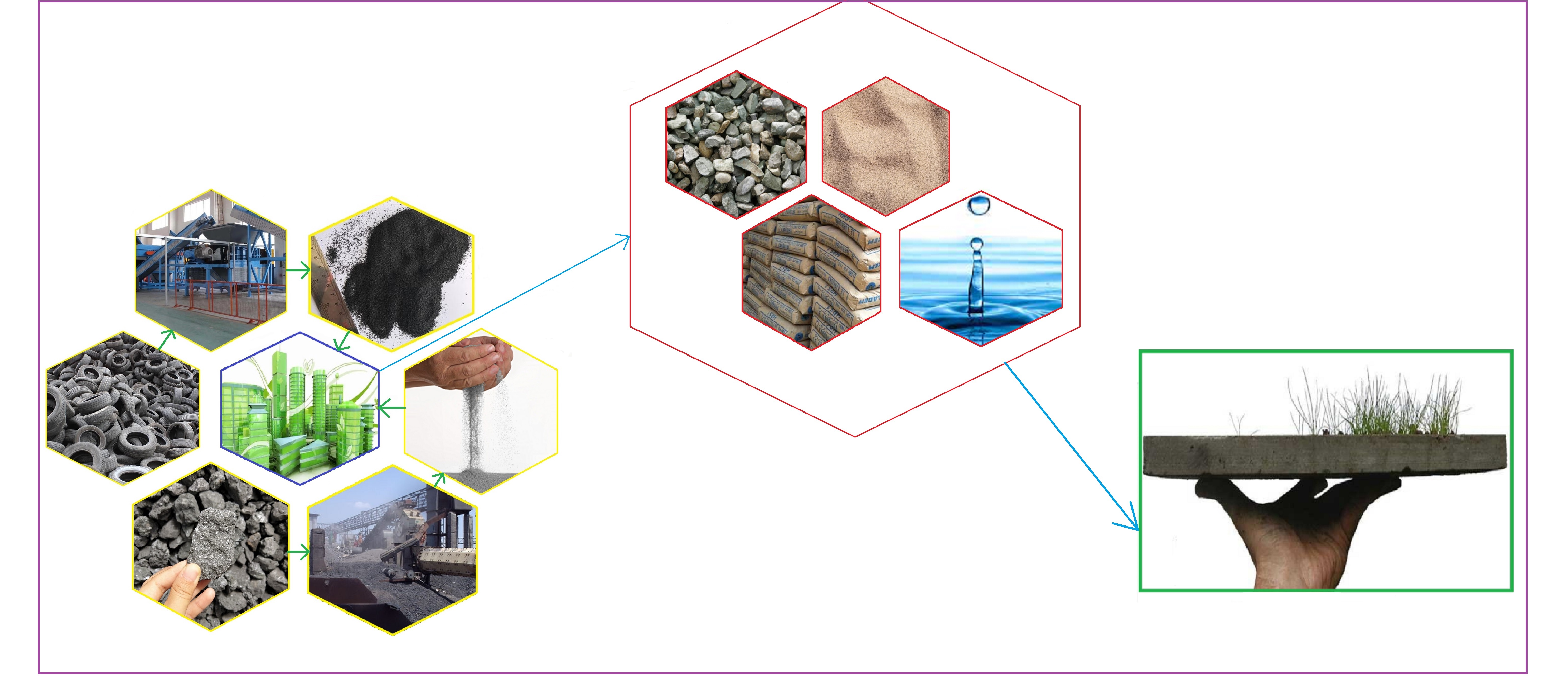 Open Access
Open Access
ARTICLE
Evaluating Simultaneous Impact of Slag and Tire Rubber Powder on Mechanical Characteristics and Durability of Concrete
1
Department of Civil Engineering, Science and Research Branch, Islamic Azad University, Tehran, Iran
2
Structural and Earthquake Research Center (SERC), Amirkabir University of Technology (Tehran Polytechnic), Tehran, Iran
3
Department of Civil Engineering, Monash University, Melbourne, Australia
* Corresponding Author: Farzad Hatami. Email:
Journal of Renewable Materials 2022, 10(8), 2155-2177. https://doi.org/10.32604/jrm.2022.019726
Received 11 October 2021; Accepted 01 December 2021; Issue published 25 April 2022
Abstract
In this experimental study, the impact of Portland cement replacement by ground granulated blast furnace slag (GGBFS) and micronized rubber powder (MRP) on the compressive, flexural, tensile strengths, and rapid chloride migration test (RCMT) of concrete were assessed. In this study, samples with different binder content and water to binder ratios, including the MRP with the substitution levels of 0%, 2.5% and 5%, and the GGBFS with the substitution ratios of 0%, 20% and 40% by weight of Portland cement were made. According to the results, in the samples containing slag and rubber powder in the early ages, on average, a 12.2% decrease in the mechanical characteristics of concrete was observed, nonetheless with raising the age of the samples, the impact of slag on reducing the porosity of concrete lowered the negative impact of rubber powder. Regarding durability characteristics, the RCMT results of the samples were enhanced by using rubber powder because of its insulation impact. Moreover, adding slag into the MRP-included mixtures results in a 23% reduction in the migration rate of the chloride ion averagely. At last, four mathematical statements were derived for the mechanical and durability of concrete containing the MRP and GGBFS utilizing the genetic programming method.Graphic Abstract

Keywords
Cite This Article
 Copyright © 2022 The Author(s). Published by Tech Science Press.
Copyright © 2022 The Author(s). Published by Tech Science Press.This work is licensed under a Creative Commons Attribution 4.0 International License , which permits unrestricted use, distribution, and reproduction in any medium, provided the original work is properly cited.


 Submit a Paper
Submit a Paper Propose a Special lssue
Propose a Special lssue View Full Text
View Full Text Download PDF
Download PDF Downloads
Downloads
 Citation Tools
Citation Tools